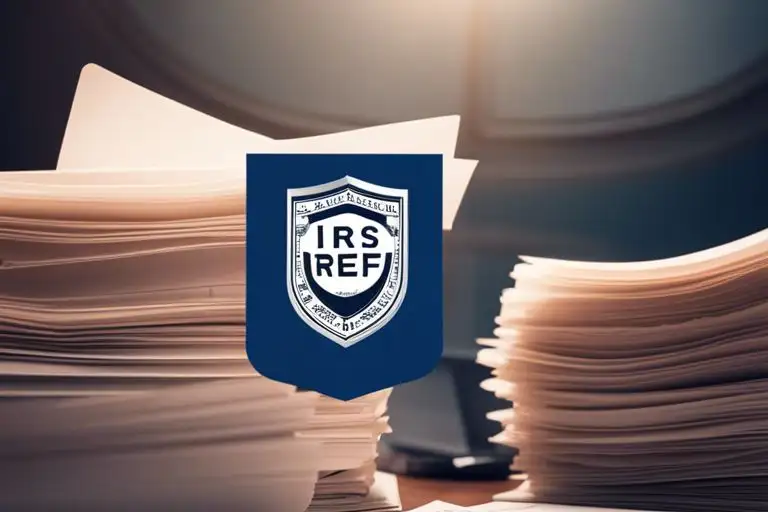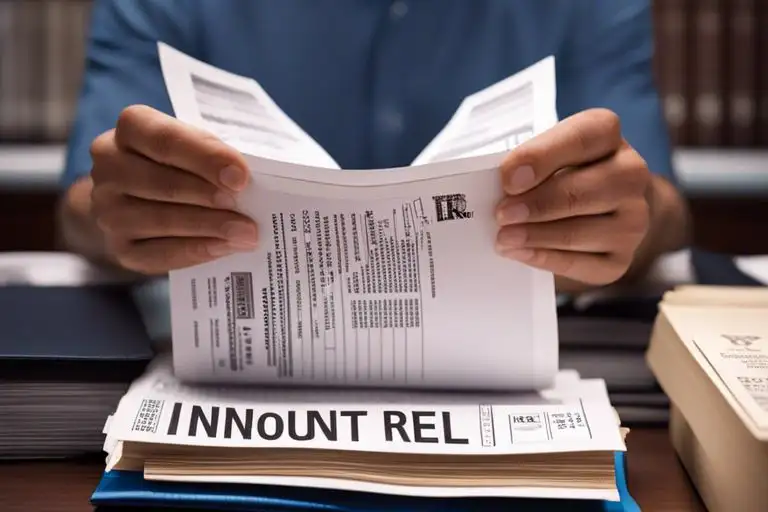Embarking on a journey to understand the complex world of taxes can be overwhelming, especially when dealing with potential issues caused by your spouse’s tax problems. Fortunately, there is a provision in the tax law known as Innocent Spouse Relief that can offer protection and relief for individuals who have been negatively impacted by their spouse’s tax liabilities. In this blog post, we will delve into the details of Innocent Spouse Relief, how it works, and the steps you can take to protect yourself from your spouse’s tax issues.
Key Takeaways:
- Understanding Innocent Spouse Relief: Innocent Spouse Relief is a provision that can protect you from your spouse’s tax issues if you were unaware or not involved in the tax problem.
- Eligibility Criteria: To qualify for Innocent Spouse Relief, you must meet certain criteria, including filing a joint tax return and proving your lack of knowledge or involvement in the tax issue.
- Types of Innocent Spouse Relief: There are three types of Innocent Spouse Relief: Classic Innocent Spouse Relief, Separation of Liability, and Equitable Relief, each with its own requirements and benefits.
- Applying for Innocent Spouse Relief: The application process for Innocent Spouse Relief can be complex and may require legal assistance to navigate successfully. It’s important to gather all necessary documentation and evidence to support your claim.
- Protecting Yourself from Future Issues: If you are concerned about potential tax issues arising from your spouse in the future, consider filing separate tax returns to avoid being held liable for their tax liabilities.
What is Innocent Spouse Relief?
Obviously, when you file joint tax returns with your spouse, you trust that they are handling their tax affairs responsibly. However, issues may arise, such as underreporting of income or claiming improper deductions, which can result in tax liabilities. Innocent Spouse Relief is a provision in the tax law that can protect you from being held responsible for your spouse’s tax issues.
Definition and Legal Background
Spouse tax issues fall under the Innocent Spouse Relief provision when one spouse is held liable for the other’s tax debts. This provision allows the innocent spouse to seek relief from the IRS by proving that they had no knowledge or reason to know about the misreported income or improper deductions. The legal background of Innocent Spouse Relief stems from the Internal Revenue Code, which provides guidelines for determining when relief is appropriate.
Conditions for Eligibility
Spouse eligibility for Innocent Spouse Relief depends on meeting certain conditions, such as filing a joint tax return, proving ignorance of the tax inaccuracies, and demonstrating that it would be unfair to hold the innocent spouse responsible for the tax debt. It’s important to note that the innocent spouse must prove their lack of knowledge or reason to know about the tax issues. If the IRS finds that the innocent spouse benefited from the understated income or improper deduction, their claim for relief can be denied.
With high stakes involved, it’s crucial for spouses to seek professional tax advice when considering Innocent Spouse Relief. Consulting a tax attorney or a certified public accountant will provide guidance on the eligibility requirements and the process of applying for relief. It is essential to carefully evaluate the situation and provide strong evidence to support the claim for relief.
Types of Relief Available
One of the most important aspects of Innocent Spouse Relief is understanding the types of relief available. The three main types of relief are Innocent Spouse Relief, Separation of Liability Relief, and Equitable Relief.
| Innocent Spouse Relief | Provides relief from additional tax you owe if your spouse or former spouse failed to report income, reported income improperly, or claimed improper deductions or credits |
| Separation of Liability Relief | Allocates additional tax owed between you and your spouse or former spouse. You are then responsible for the amount of tax allocated to you |
| Equitable Relief | Provides relief from additional tax owed if you do not qualify for innocent spouse relief or separation of liability relief |
| Requirement | Each of these types of relief has specific requirements that must be met in order to qualify for relief |
| Application Process | The application process for each type of relief may vary, and it is important to understand the specific requirements and procedures for each type |
Innocent Spouse Relief
Types of relief available under Innocent Spouse Relief are designed to provide protection for individuals who were unaware of their spouse’s tax issues. Innocent Spouse Relief is a form of relief that allows an individual to be relieved of responsibility for paying tax, interest, and penalties if these were caused by their spouse or former spouse.
Separation of Liability Relief
Innocent Spouse Relief is different from Separation of Liability Relief, which allocates additional tax owed between individuals and their spouses. Under separation of liability relief, a portion of the understated tax can be allocated to the innocent spouse, providing a fair distribution of the liability.
A significant benefit of separation of liability relief is that it provides an opportunity for the innocent spouse to gain relief from a portion of the tax liability while still being allocated a share of the liability for reporting adjustments made to their joint tax return.
Equitable Relief
With Equitable Relief, the innocent spouse may qualify for relief from the tax liability if they do not meet the requirements for innocent spouse relief or separation of liability relief. Equitable relief takes into consideration the facts and circumstances of the specific situation, providing an option for relief in unique cases.
Separation of liability relief may not always be a viable option for innocent spouses who do not qualify for innocent spouse relief, and in such cases, equitable relief may provide the necessary protection and relief from tax liability.
The Application Process
After realizing that you may be eligible for Innocent Spouse Relief, the next step is to understand the application process. This involves gathering necessary documentation, filling out the appropriate forms, and communicating with the IRS to present your case.
How to Apply for Innocent Spouse Relief
Process of applying for Innocent Spouse Relief starts with filing Form 8857, the Request for Innocent Spouse Relief. This form requires detailed information about both you and your spouse, as well as the tax years in question. It’s crucial to be accurate and thorough in completing this form, as any discrepancies can lead to complications in the review process. Once the form is submitted, the IRS will begin their evaluation of your request.
Necessary Documentation and Evidence
To support your case for Innocent Spouse Relief, it’s necessary to gather documentation and evidence that demonstrates your lack of involvement in the erroneous tax filings. This may include financial records, communication with your spouse, and any other relevant information that can help establish your innocence in the matter.
Necessary documents also include bank statements, tax returns, and any correspondence with the IRS related to the tax issues in question. The more comprehensive and compelling your evidence is, the stronger your case for Innocent Spouse Relief will be.
Timeline and IRS Communication
Spouse seeking Innocent Spouse Relief should be aware that the process can take some time. After submitting your request, the IRS will likely reach out for additional information or clarification. Timely and clear communication with the IRS during this stage is crucial in moving the process forward and ensuring that all necessary information is provided.
The timeline for a decision on your Innocent Spouse Relief request can vary, ranging from several months to over a year. It’s important to stay informed about the progress of your case and follow up with the IRS as needed.

Common Challenges and Pitfalls
Not everyone who applies for innocent spouse relief is successful. There are common challenges and pitfalls that can hinder your chances of receiving relief. It is crucial to be aware of these obstacles and take proactive steps to overcome them.
Frequent Reasons for Denial
The most frequent reasons for denial of innocent spouse relief include lack of knowledge about the tax return, failure to establish that you had no reason to know about the understatement of tax, and failure to prove that it would be unfair to hold you liable for the tax deficiency. Additionally, if you are still married to the spouse for whom the tax return was filed, the IRS may deny your request for relief.
Strategies for Successfully Overcoming Obstacles
Denial of innocent spouse relief can be a daunting setback, but there are strategies to increase your chances of success. It is crucial to gather as much evidence as possible to support your claim, including documentation of your lack of involvement in the tax matters, communication with your spouse about the tax issues, and any financial or legal barriers that prevented you from contesting the tax liabilities. Seeking professional assistance from a tax attorney or accountant with experience in innocent spouse relief cases can also significantly improve your chances of overcoming obstacles.
To increase your likelihood of success in obtaining innocent spouse relief, it is essential to approach the process with thorough preparation and a solid understanding of the eligibility requirements and potential challenges. By being proactive and diligent in gathering supporting evidence and seeking professional guidance, you can position yourself for a successful outcome and protect yourself from your spouse’s tax issues.
Case Studies: Innocent Spouse Relief in Action
Your journey to understanding innocent spouse relief wouldn’t be complete without a look at real-life scenarios where individuals like you successfully navigated the process. The following case studies shed light on the diverse situations where innocent spouse relief proved to be a crucial shield against tax liabilities.
- Case Study 1: Ms. A, a married individual filing jointly, requested innocent spouse relief for tax year 2018. She proved that she had no knowledge of the underreported income and provided evidence that she reasonably believed her spouse was handling the family’s tax matters diligently. The IRS granted Ms. A full relief from the liability, allowing her to start afresh.
- Case Study 2: Mr. B, a divorced individual, applied for innocent spouse relief for tax year 2017. Despite filing jointly during the marriage, the divorce decree clearly stipulated that his ex-spouse was solely responsible for any previously unreported income. The IRS agreed and absolved Mr. B from the tax debt, recognizing the clarity of the divorce settlement.
- Case Study 3: Mrs. C, a married individual filing jointly, faced a challenging situation when her spouse passed away unexpectedly. She sought innocent spouse relief for tax year 2019, proving that she did not know about the inaccurate deductions her spouse had claimed. Mrs. C was granted relief, allowing her to focus on rebuilding her life after the loss of her partner.
Successful Applications and Outcomes
The successful cases mentioned above exemplify the importance of thorough documentation and evidence gathering when applying for innocent spouse relief. In each scenario, the individuals were able to demonstrate their lack of knowledge regarding the tax issues, thereby securing relief from the liabilities. These outcomes highlight the effectiveness of innocent spouse relief in protecting individuals from their spouse’s tax matters.
Learning from Denied Applications
Any denial of innocent spouse relief serves as a learning opportunity for those seeking tax liability protection. Understanding the reasons behind the denials can shed light on the IRS’s criteria for granting relief. By analyzing the common factors contributing to denials, individuals can better prepare their applications and strengthen their cases to align with the IRS requirements.
Case studies of denied applications reveal the importance of providing comprehensive evidence to support claims of innocence. The IRS closely scrutinizes the financial and personal dynamics within a marriage to determine eligibility for relief. Therefore, individuals should meticulously gather relevant documentation to substantiate their innocence in cases involving tax liabilities.
Financial and Legal Implications
To protect yourself from your spouse’s tax issues, it’s important to understand the financial and legal implications of innocent spouse relief. Managing finances post-relief and implementing future tax planning for married couples are crucial steps to safeguarding your financial well-being.
Managing Finances Post-Relief
Financial stability is paramount after obtaining innocent spouse relief. It’s essential to review and restructure your finances to ensure that you are shielded from any potential liabilities arising from your spouse’s tax problems. This may involve assessing your assets, liabilities, and income to establish a new financial framework that protects you from any future tax complications.
Future Tax Planning for Married Couples
Planning for the future is critical for effectively managing tax implications within a marriage. It’s important to seek professional advice to develop a comprehensive tax strategy that addresses potential issues and minimizes any adverse impact on your finances. Collaborating with a knowledgeable tax professional can provide you with the guidance needed to navigate tax obligations and protect your financial interests.
It is imperative to understand the potential risks and opportunities associated with future tax planning for married couples. Implementing proactive measures can safeguard your financial well-being and provide peace of mind in the face of potential tax challenges. Seeking professional guidance and taking a proactive approach to future tax planning can positively impact your financial future.
Conclusion
Drawing together all the information provided, it is crucial to understand your rights and responsibilities as a spouse when it comes to taxes. Innocent spouse relief can provide a potential avenue for protection in situations where your spouse may have made errors or committed fraud on your joint tax return. It is important to be vigilant, keep detailed records, and seek professional guidance if you suspect any issues with your joint tax return.
Ultimately, innocent spouse relief can provide a sense of relief and protection for individuals who find themselves in difficult tax situations due to their spouse’s actions. By being informed and proactive, you can protect yourself and your financial well-being from your spouse’s tax issues.
FAQ
Q: What is Innocent Spouse Relief?
A: Innocent Spouse Relief is a provision in the tax law that allows a spouse to be relieved from joint and several liability for the tax, interest, and penalties arising from the other spouse’s erroneous items or omissions on a jointly filed tax return.
Q: Who is eligible for Innocent Spouse Relief?
A: You may be eligible for Innocent Spouse Relief if you filed a joint tax return and your current or former spouse (or your ex-spouse) improperly reported items or omitted items on your tax return.
Q: What are the three types of Innocent Spouse Relief?
A: The three types of Innocent Spouse Relief are Traditional Innocent Spouse Relief, Separation of Liability, and Equitable Relief.
Q: How does Traditional Innocent Spouse Relief work?
A: Traditional Innocent Spouse Relief provides relief from additional taxes that arise due to the understatement of tax on a joint return. It is available if you did not know, and had no reason to know, that there was an understatement of tax when you signed the joint return.
Q: What is Separation of Liability?
A: Separation of Liability provides for the allocation of additional tax owed between you and your spouse. You are then responsible only for the amount of tax allocated to you. It is available for those who are no longer married, are legally separated, or have not been a member of the same household for the 12 months preceding the request for relief.
Q: What is Equitable Relief?
A: Equitable Relief may apply when you do not qualify for Traditional Innocent Spouse Relief or Separation of Liability relief. It is a catch-all provision and may be available if, after considering all the facts and circumstances, it would be unfair to hold you liable for the understated or unpaid tax.
Q: How do I apply for Innocent Spouse Relief?
A: To apply for Innocent Spouse Relief, you need to fill out Form 8857, Request for Innocent Spouse Relief, and submit it to the IRS along with any additional documentation required based on the type of relief you are seeking.
















